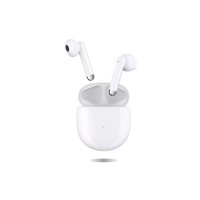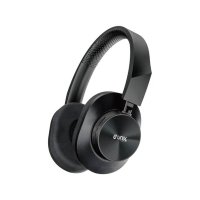The Hidden Factors That Affect Headphone Quality
When it comes to choosing the perfect pair of headphones, most people focus on the obvious features like sound quality, comfort, and brand reputation. However, several hidden factors can significantly impact headphone performance and overall quality. Understanding these factors can help you make a more informed decision and get the most out of your headphones. Here’s a look at some of these lesser-known elements that can affect headphone quality:
1. Driver Technology
The driver is the component responsible for converting electrical signals into sound. While most people know about the size of drivers (usually measured in millimeters), the type of driver technology used can also make a big difference. Common types include dynamic drivers, planar magnetic drivers, and electrostatic drivers. Each has its own strengths and weaknesses, influencing aspects like clarity, bass response, and overall sound signature.
Dynamic Drivers: Known for their powerful bass and wide soundstage.
Planar Magnetic Drivers: Offer exceptional detail and less distortion.
Electrostatic Drivers: Provide unmatched clarity and accuracy but are often found in high-end models.
2. Impedance
Impedance, measured in ohms, affects how much power is required to drive the headphones. High-impedance headphones (usually above 100 ohms) are often favored by audiophiles and require more power to reach optimal sound levels. Low-impedance headphones (below 50 ohms) are easier to drive and can be used with portable devices like smartphones. Matching the impedance to your audio source can enhance sound quality and performance.
3. Frequency Response
Frequency response refers to the range of frequencies that the headphones can reproduce, typically measured in Hertz (Hz). While a wider frequency range theoretically allows for more detailed sound, other factors like driver design and tuning play crucial roles. A frequency response graph is useful, but how the headphones handle these frequencies in real-world scenarios can vary.
4. Sound Isolation and Leakage
Sound isolation and leakage impact how well headphones block out external noise and prevent sound from escaping. Over-ear headphones generally offer better isolation than on-ear or in-ear models. Noise-canceling features can also enhance isolation, but the effectiveness varies by design and technology. Consider your listening environment to determine how important isolation is for you.
5. Build Materials
The materials used in headphone construction affect durability, comfort, and sound quality. For instance, high-quality ear pads made from memory foam or genuine leather can provide better comfort and acoustic performance compared to cheaper materials. Additionally, the type of enclosure (closed-back vs. open-back) impacts sound isolation and the overall listening experience.
6. Cable Quality and Design
The quality of the headphone cable can affect signal transmission and durability. Cables made from high-purity copper or silver can offer better conductivity and reduce signal loss. Detachable cables are also a feature to look for, as they can be replaced if damaged, extending the lifespan of your headphones.
7. Acoustic Tuning
Manufacturers often fine-tune headphones to achieve a specific sound signature, such as bass-heavy or balanced. This tuning process involves adjusting the drivers, damping materials, and acoustic chambers. Personal preferences play a significant role here, so it’s essential to try different models to find the one that best suits your taste.
8. Firmware and Software
For wireless and smart headphones, firmware updates and accompanying software can influence performance. Manufacturers may release updates to improve connectivity, sound quality, or add new features. Regularly updating your headphones’ firmware ensures you get the best performance and any new enhancements available.
9. Ear Cup Design and Fit
The design of the ear cups and their fit around your ears can impact both comfort and sound quality. Over-ear headphones with well-padded ear cups generally provide better comfort and sound isolation compared to on-ear models. A good fit ensures that the drivers are positioned optimally, affecting the soundstage and overall audio experience.
Conclusion
While the major specifications and features of headphones are important, considering these hidden factors can significantly impact the quality of your listening experience. By paying attention to driver technology, impedance, frequency response, and other subtle details, you can make a more informed choice and find a pair of headphones that truly meets your needs.
Understanding these factors can help you appreciate the complexity behind headphone design and lead you to a more satisfying audio experience.



